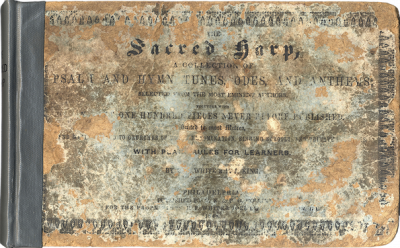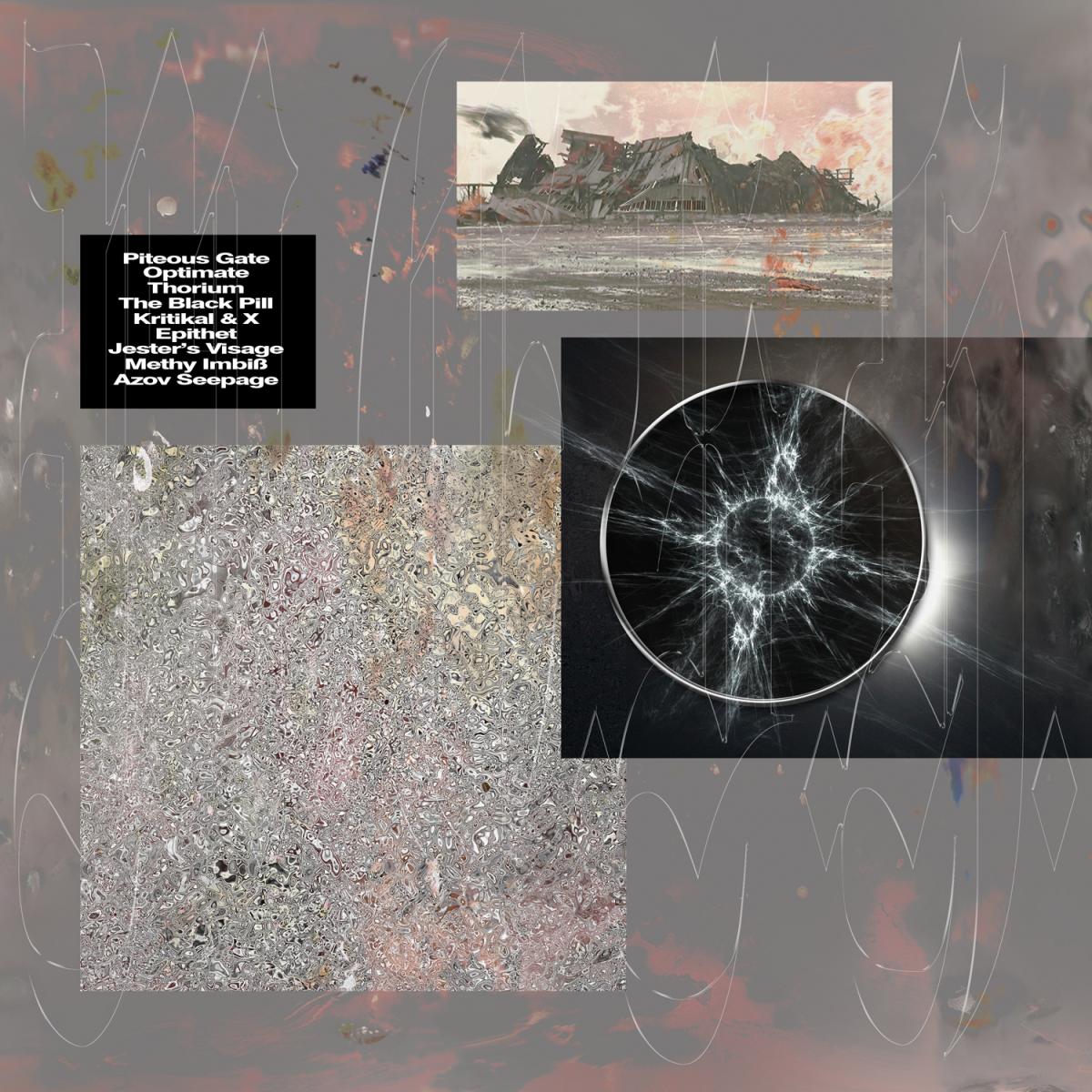
Sampling Stories Vol. 5: COOL FOR YOU
High-pitched voices, unfamiliar harmonies, rumbling and raw rhythms: We are listening to the musical output of Berlin-based multidisciplinary artist, Vika Kirchenbauer. Under the moniker COOL FOR YOU she tends to «decompose harmonies as colonizers». What she means by that becomes obvious if you look at the sampling strategies on her most recent EP, MOOD MANAGEMENT (Creamcake 2017). There – as in the tracks of her previous EP – she processes recordings of Sacred Harp gatherings, a religious choral tradition from the US South.
MOOD MANAGEMENT is a highly conceptual piece of electronic music. The tracks have been released with black and white music videos (filmed with infrared cameras) and an audio-visual live performance. Here, we discuss the music only. Read this interview on contemporary art blog aqnb to know more about the other facets of Kirchenbauer’s project.
Looking at the «Other»
In her work Vika Kirchenbauer has explored representations of the «Other» for quite some time. A short biography on her Vimeo profile expands on this approach:
She [Vika Kirchenbauer] examines the troublesome nature of «looking» and «being looked at» in larger contexts including labour within post-fordism and the experience economy, modern drone warfare and its insistence on unilateral staring, the power relationships of psychiatry, performer/spectator relations, participatory culture, contemporary art display and queer representational politics as well as the everyday life experience of ambiguously gendered individuals.
It is this kind of strong and committed artificial agenda wherein MOOD MANAGEMENT has to be located. I talked with Kirchenbauer about the relationship between colonialism and music, the violence of institutions, and sampling strategies by focussing in particular on the track «STABILIZED, YES!».
[Hannes Liechti]: What is your approach to sampling?
[Vika Kirchenbauer]: Sampling as a technique allows me to engage with material in a critical manner. I'm not too interested in the mere creation of aesthetics but more in how a medium functions culturally and politically, so sampling lets me examine that in a way other modes of composition don't. It allows me to offer a more conceptual approach on music-making and to discuss how music is used and received, on a broader historical and political level, but also on a more personal affective level.
[HL]: On MOOD MANAGEMENT you sample tunes from the Sacred Harp tradition of the US South. Why have you chosen this specific, religious choral tradition?
[VK]: Sacred Harp isn't really from the US South, but originated in New England before the first collection of songs [The Sacred Harp – a book by Benjamin Franklin White and Elisha J. King with religious tunes, notated in a special manner called «shape-notes»] was compiled in 1844. Many of the songs find their earliest roots in early 18th century England though and came to North America through settlers. What's interesting to me is that the harmony structures that characterize the songs appear to sound mildly «exotic» to the Western ear, as for example the fourths and fifths are emphasised rather than the thirds.
[HL]: Let's stay a bit more about these (for our ears) uncommon harmonies. On SoundCloud you write about «deconstructing harmonies as colonizers». How can we understand harmonies as colonizers?
[VK]: Music has been largely used not only by missionaries but also within state and economic colonialism. Not only Bible texts or physical violence, but also harmonies have been used as a form of power, a form of violence, as a way of teaching supreme culture and supreme (religious) values. Thus, these harmony structures have obviously influenced people and have colonized them and their culture. Of course, that came in the context of greater violence and occupations. But today, when the West perceives «world music» as «authentic» and «untouched» that blatantly ignores centuries of colonial history and (mutual) influences and relationalities. The economic setups and ties that now let the West consume music from places that seem remote is in its current form unthinkable outside the history of colonialism, its power structures and violence. These thoughts led me to research and work mostly with these samples of (predominantly) white and very old protestant music.
[HL]: How can we then find the violent aspect in the Sacred Harp tradition?
[VK]: I don't think it can be recognised at first glance or listen. That's why I try to examine the political and historical ramifications of the tradition. First there are the roots of many Sacred Harp songs in early 18th century England (for example country parish music) and their more than likely connection to what kind of songs or harmonies would have travelled with British Colonizers at the time. Then we've got the Sacred Harp tradition stemming from that and extending itself into the 20th and 21st century both in its original tradition but also as a foundational influence on US country music, which has been largely used in 20th century US Christian missionary endeavours. In the last few decades there have emerged provable musical reactions/incorporations of those left behind missionary vinyl songs into local music production (of the countries and regions subject to those missions). That might be the reason why I think Sacred Harp could be an interesting link to examine between British colonialism and US Christian missions over the centuries to follow.

[HL]: How do you now «decompose» these harmonies in your tracks?
[VK]: Through sampling and kind of cutting up this original material.
[HL]: You heavily raise the pitch of these samples. Is that also a way of deconstructing the harmonies?
[VK]: Yeah, I'd say so. Maybe I don't completely deconstruct the harmonies, since I preserve the relative harmonies. But looking at the Sacred Harp tradition, harmony is always treated in a relative way, there's no fixed key note: each time someone else leads the group and sets the key note and everyone tries to tune in to the best of their abilities. To come back to your question: yes, it is kind of a violent interference to something that is static and kind of finished.
[HL]: Beyond the harmonies: are there other aspects of Sacred Harp singing that interest you?
[VK]: Yes, for example the internal organization of the singing groups. It assumes no audience but only active participants and serves as a metaphor for how belonging works in many communities and social groups. Groups and religion work mostly in a performative rather than ideological manner. There are certain sets of expectations on the almost ritualistic behaviour that validates the individual as being part of the group. So even when no outside audience is assumed, of course there prevails an inside audience that legitimizes and de-legitimizes. Within Sacred Harp singing there seems to be a lot of room for dissonance and unprofessionalism, which is fascinating, yet still there are very strong currents of simultaneous inclusion and exclusion.
Looking for Transcendental Religious Madness
[HL]: Can you tell me a bit about the source material you have used? What kinds of sources did you use and where did you get them from?
[VK]: I use old recordings from the 1950s from an Internet archive. There aren't so many Sacred Harp recordings out there due to the fact that there is no audience at Sacred Harp gatherings, as it's music that is more experiential than meant for recording.
[HL]: How have you been introduced to this tradition?
[VK]: It was a acquaintance of mine who practices Sacred Harp nowadays here in Berlin. It was also he who showed me the link to the archive mentioned before.
[HL]: What did you do with this material then?
[VK]: Basically I downloaded like maybe 250 recordings. My process was just going through them one by one and trying to work with them – I altered them, pitched them, selected bits... But then I was also abandoning stuff if there was nothing in it – after like ten or 15 minutes I just went on to the next one.
[HL]: How did you choose the bits you have used? What kind of criteria are in play here?
[VK]: Well, there are different aspects to it. First of all I listen to the pure recordings, just as they are. Then I check the quality if it is useable at all or – in case of bad quality – if there are other aspects to the tune that might be interesting. A lot of these older recordings come along in too bad of a quality to be worked with. So whenever I time-stretched them or I did any kind of heavier pitching to them, there was too much digital noise that is not super interesting to me. Then there have been tunes that didn't fit into the type of atmosphere I had in mind for the record. Some of them had been pretty fast or more rhythmical or stomping by the nature of their sound – that didn't really work for the kind of aesthetics I wanted to evoke. I was more interested in that kind of hypnotic, transcendental religious madness – a happy tune doesn't resonate here. And finally there are also certain tunes where you can isolate singular pitches of the voices since the singers are arranged separately inside the room of performance. Sometimes – actually just on rare occasions – it is thus possible to just take one mono channel of the stereo recording, to isolate the latter by gender, and to take out the vocal ranges I'm interested in.
[HL]: That would be the higher pitches like the trebles or the tenors, I assume?
[VK]: Yes, that's right. But in general, I think there is some sense of aesthetic choice to it that makes it hard to explain what exactly attracts me to particular bits of these recordings.
[HL]: What is your style of working when it comes to production?
[VK]: When I work on a composition I mostly stay within samples from one tune. I tend to not sample longer sequences or phrases (with a few exceptions), but chop things up and re-assemble new melodies out of them. Using the samples from one track alone gives me the opportunity to stay within the original harmony structure though. On a more technical level, I pitch the samples all equally - by 12 or 15 steps mostly - to maintain the relative harmony. Everything else I do to the samples is no big magic, just relatively basic eq'ing, filters and effects. All beats are composed independently on an MPC and are only later merged with the samples into a larger composition.
COOL FOR YOU: «MOOD MANAGEMENT»
The Violence of Institutions
[HL]: Let's focus on the track «STABILIZED, YES!» now. Can you explain what you did there?
[VK]: For that track the sampled bits are super short. I use them in fast repetition, so the sample becomes more of a single note really than anything of recognizable context. Because the dissonances in the singing are so high though, what should be a uniform, individual note in the original choir becomes a peculiar chord when isolated. The recording quality of the original sample also is very poor, so when pitched the characteristics are even scratchier - which I like, it makes it a bit hysteric and aggressive at the same time.
[HL]: How many bits of one single tune did you process?
[VK]: All in all I have probably used around twenty-five to thirty samples here.
[HL]: How long did it take you to produce this track?
[VK]: It's hard to tell. I think it was perhaps one of the tracks that went relatively quickly. Maybe a week or maybe even less. I also played it once in a show as the final track of the set, but then I was not happy with the initial beat section in it, so before I performed it again a few months later I revisited it. And also when I was putting together the EP I changed some of the beats again to make them a bit more complex. Before it was a bit too poppy for my taste.
[HL]: Will you still be changing it at all?
[VK]: No, it is definitely finished now. Once they have been released I don't go back to tracks anymore. Whenever there's something that I aesthetically don't like so much or I'm unhappy with in retrospect, I just try to change it in future productions.
[HL]: What is the title of the track – «STABILIZED, YES!» – about?
[VK]: It is named after a chapter in the book Airless Spaces by feminist author Shulamith Firestone. She wrote it over a period of about ten years that she spent in and out of psychiatric institutions (mostly against her will). «Stabilized, Yes!» is part of a conversation she had when she met a doctor who had in the past institutionalized forcefully. That doctor remembered her and asked: «Are you happy, are you feeling better?» and she just answered «No.» After a few more questions that she also declined, in the end he settled for «Stabilized at least?» to which she answered «Stabilized, yes».
[HL]: And why did you choose that title?
[VK]: Most of the tracks kind of have to do with affect theories. «SHAME/HUMILIATION» is also referencing books, «TOXIC OPTIMISM» references Lauren Berlant. All of them are linked to how people relate to different kinds of institutions through the lens of class and gender. «STABILIZED, YES!» is just an example of the individual's relation to systems of psychiatry whereas other tracks reference other institutions. In the end, MOOD MANAGEMENT speaks about the violence of institutions.
[HL]: Is there a connection to the Sacred Harp sample?
[VK]: Not really to that specific sample I would say. I think with the titling of the track I try to open up different association points and possible readings of what the music could be about.
Between Ambiguity and Contextualization
[HL]: How important is the semantic meaning of the source material? In other words: is it in any sense important what they are really singing in this tune?
[VK]: Basically the songs are all about salvation, Jesus, and God my saviour. That's not extremely complex. But I tried to work with it in a way such that it's not recognizable in the end. I think I'm more interested in these kinds of affective, harder to grasp elements of music and its use within colonialism and less in the written word, because part of the argument is that religion works much more in a kind of performative than in an ideological sense.
[HL]: But does that mean it remains important to know about the theory behind your approach to sampling when listening to the tracks? Without any additional info, I guess, hardly anyone would recognize the context of Sacred Harp singing.
[VK]: I think this is secondary too. The reason why I have been focussing on music so much in the last two years is that mostly all of my other work is very language-based and inevitably comes along with quite specific types of exclusions due to educational background, class, and types of language I use. I also focus on music as a way of not using language. In my tracks I neither use my voice nor any kind of singing or recognizable language. I try to find a way to work with something that is approachable and can be appreciated without any kind of cognitive (background) reading. I also think it is ok to have some ambiguity to where the samples might come from, while listening to them. At the same time I think that a minimum of contextualization is needed when presenting the tracks: For example I wanted to point out that these tracks play with the fact that these harmonies can be read as exotic, and – finally – that as a white person, I'm not sampling «world music».
[HL]: Would that be an ethical limit for you when it comes to sampling?
[VK]: Yes, that's something I would not do. From my own white subject position I would never appropriate music from a culture that has suffered colonialism and use that material for my own benefit. That's kind of an ethical standpoint I have and also one of the reasons why I point out that it's white protestant music I had been using here.
[HL]: Vika, thanks a lot for this talk.
The interview has been conducted via Skype, 22.2.2017. This article has been published in the context of the PhD research on sampling in experimental electronic music by Hannes Liechti. For more info click here.
Biography
Links
Published on March 22, 2017
Last updated on July 13, 2020
Topics
About the ups and downs of cross-cultural creativity: Korean reggae, vaporwave, and the worldwide Hindu Holi festival.
From Beyoncés colonial stagings in mainstream pop to the ethical problems of Western people «documenting» non-Western cultures.
What happens when U.S.-blogger collects african music and offers it for free? What is the difference between «textually signaled» and «textually unsignaled»?
Does one really need the other in order to understand oneself?
From priests claiming to be able to shapeshift into an animal to Irish folk musicians attempting to unify Protestants and Catholics.
Sampling is political: about the use of chicken clucks or bomb sounds in current music.

